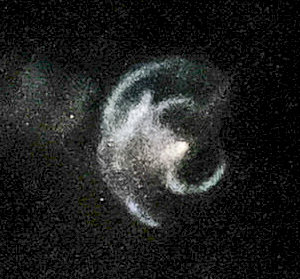NASA concludes design error caused June 2015 Falcon 9 launch failure
NASA’s independent investigation into the SpaceX’s June 2015 Falcon 9 launch failure has concluded, like SpaceX, that it was caused by the failure of a strut holding an internal tank, but unlike SpaceX the report cites a “design error” for that failure.
In simpler terms, the steel strut that SpaceX chose was not certified to be used in such conditions. Furthermore, SpaceX did not meet the 4:1 redundancy requirement that the manufacturer had instructed. Therefore, the IRT recommended that SpaceX applied greater care when certifying commercially sourced parts for flight.
Interestingly, the IRT also discovered another area of concern not directly related to the accident that arose during the investigation. The report found that the telemetry architecture on the upcoming “Full Thrust” version of the Falcon 9 included a new method of handling packets that increased latency, and thus vital data could have been lost in the event of a similar anomaly.
The IRT report finished by noting that all of the key findings in the report were addressed by SpaceX in time for the successful Jason-3 mission for NASA.
I suspect a political decision at NASA explains the timing of the release of this report, far later than normal. At this point the issues it raises are mostly moot, as SpaceX has upgraded the Falcon 9 and is no longer using the older version that failed on that June 2015 launch. Moreover, NASA has certified those upgraded rockets, which suggests they have reviewed the company’s methods and have decided it is now using parts that are properly certified.
However, the recent successful launch of Falcon Heavy has created a big threat to SLS. This report, released now, is certainly going to be used by SpaceX’s enemies to argue that it is dangerous to buy its heavy lift rocket. “Look, SpaceX is sloppy! It uses uncertified parts that cause its rockets to blow up!” I can see the op-eds, paid for covertly by the big space companies Boeing and Lockeheed Martin, being typed even as I write this.
NASA’s independent investigation into the SpaceX’s June 2015 Falcon 9 launch failure has concluded, like SpaceX, that it was caused by the failure of a strut holding an internal tank, but unlike SpaceX the report cites a “design error” for that failure.
In simpler terms, the steel strut that SpaceX chose was not certified to be used in such conditions. Furthermore, SpaceX did not meet the 4:1 redundancy requirement that the manufacturer had instructed. Therefore, the IRT recommended that SpaceX applied greater care when certifying commercially sourced parts for flight.
Interestingly, the IRT also discovered another area of concern not directly related to the accident that arose during the investigation. The report found that the telemetry architecture on the upcoming “Full Thrust” version of the Falcon 9 included a new method of handling packets that increased latency, and thus vital data could have been lost in the event of a similar anomaly.
The IRT report finished by noting that all of the key findings in the report were addressed by SpaceX in time for the successful Jason-3 mission for NASA.
I suspect a political decision at NASA explains the timing of the release of this report, far later than normal. At this point the issues it raises are mostly moot, as SpaceX has upgraded the Falcon 9 and is no longer using the older version that failed on that June 2015 launch. Moreover, NASA has certified those upgraded rockets, which suggests they have reviewed the company’s methods and have decided it is now using parts that are properly certified.
However, the recent successful launch of Falcon Heavy has created a big threat to SLS. This report, released now, is certainly going to be used by SpaceX’s enemies to argue that it is dangerous to buy its heavy lift rocket. “Look, SpaceX is sloppy! It uses uncertified parts that cause its rockets to blow up!” I can see the op-eds, paid for covertly by the big space companies Boeing and Lockeheed Martin, being typed even as I write this.


